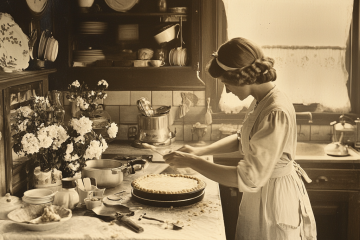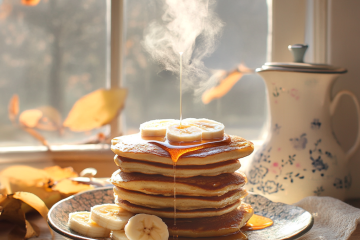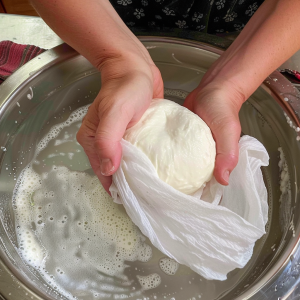
Cheesecloth for making mozzarella
Cheesecloth: The Unsung Hero of Your Kitchen (And Beyond!)
Ladies and gentlemen, gather ’round for a tale of culinary magic and DIY prowess! Today, we’re diving into the world of cheesecloth – that humble, gauzy fabric that’s about to revolutionize your kitchen game.
First things first: if you’ve never made your own cheese, you might be wondering why on earth you’d need cheesecloth. Well, buckle up, buttercup, because we’re about to embark on a cheese-making adventure that’ll knock your socks off! Making cheese is SO easy! I know you can do it and be delighted you did! What’s keeping you from it? Is it the time?
Picture this: In under an hour, while your bread is rising or your pot roast is simmering, you could be crafting your very own artisanal cheese. It’s like alchemy, but with dairy! The satisfaction of knowing exactly what’s in your cheese is unparalleled, and let me tell you, the taste? Out of this world! You can age it to your heart’s content – if you can keep your paws off it long enough, that is. I’m talking more than just mozzarella–though that’s a gamechanger in and of itself. I’m talking parmesan, feta, cheddar, you name it!
But hold your horses! This isn’t just about cheese. Oh no, we’re here to talk about the real MVP: cheesecloth itself.
Cheesecloth 101: The Good, The Bad, and The Ugly
When you’re on the hunt for cheesecloth, don’t settle for any old rag. Look for the reusable, unbleached variety. Some brands bleach or dye their cloth whiter than a polar bear in a snowstorm, but we’re not about that life. Aim for at least 60# grade, but if you want to play in the big leagues, go for 90# or higher. (I always do.)
The Cheesecloth Chronicles: Cheesecloth Uses Beyond Cheese
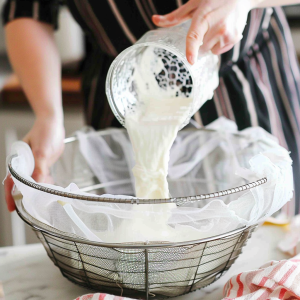
cheesecloth for making yogurt
Hold onto your hats, folks, because cheesecloth isn’t just a one-trick pony. Here’s a list of culinary conquests awaiting your cheesecloth:
- Yogurt (get your probiotic fix)
- Soy milk (for the lactose-intolerant cheese lovers)
- Butter (channeling your inner Laura Ingalls Wilder)
- Apple cider (autumn in a glass)
- Tallow (for the adventurous cook)
- Homemade syrups (IHOP, eat your heart out)
- Shredded zucchini (say goodbye to watery zucchini bread)
- Herb sachets (for when you want the flavor, not the floaters)
- Vinegar (tangy goodness)
- Stock (the base of all things delicious)
Cheesecloth Substitutes: MacGyver Edition
In a pinch? No cheesecloth? No problem! Here are some MacGyver-worthy substitutes:
- Flour sack towels (the Swiss Army knife of kitchen textiles)
- Unused pantyhose (finally, a use for those runs!)
- Brew bags (for when your beer-making hobby collides with your cheese-making obsession)
- Fine mesh strainers (a.k.a. chinoise – fancy, but a pain to clean)
- Nut milk bags (not just for hipster almond milk anymore)
- Muslin fabric (like cheesecloth’s sophisticated cousin)
- Paint strainer bags (who knew hardware stores were secret culinary supply shops?)
Cleaning Your Cheesecloth: No Rocket Science Required
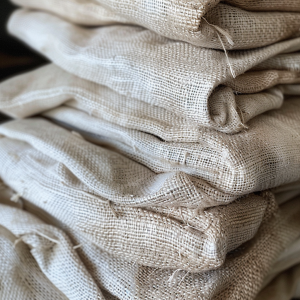
Old fashioned flour sacks or tea towels can be used instead of cheesecloth
Keeping your cheesecloth in tip-top shape is easier than buttering toast. Here are your options:
- Toss it in the dishwasher (yes, really!)
- Launder it in a delicates bag (treat it like your favorite silk undies)
- Soak it in a vinegar bath (spa day for your cheesecloth)
- Boil it (for that extra-clean feeling)
- Compost it (when it’s finally ready for retirement)
Pro tip: Skip the scented detergents and fabric softeners. Instead, embrace the power of white vinegar – it’s like a spa day for your cheesecloth!
A Word of Caution Re: Cheesecloth Substitutes
Steer clear of tightly woven, fine polyester mesh fabrics. They’re about as useful for our purposes as a chocolate teapot and often can’t handle the heat (literally). And they are not food-safe.
So there you have it, folks! Cheesecloth: not just for cheese anymore. It’s time to embrace this versatile kitchen superhero and let your culinary creativity soar. Who knows? You might just become the neighborhood’s go-to cheese wizard in the event of a zombie apocalypse. Now that’s what I call a valuable skill set!
